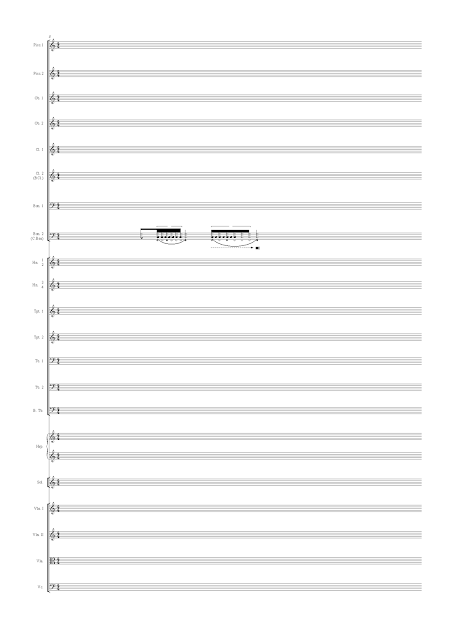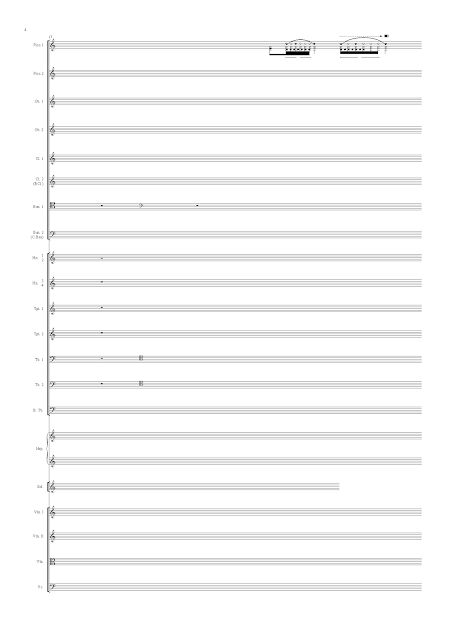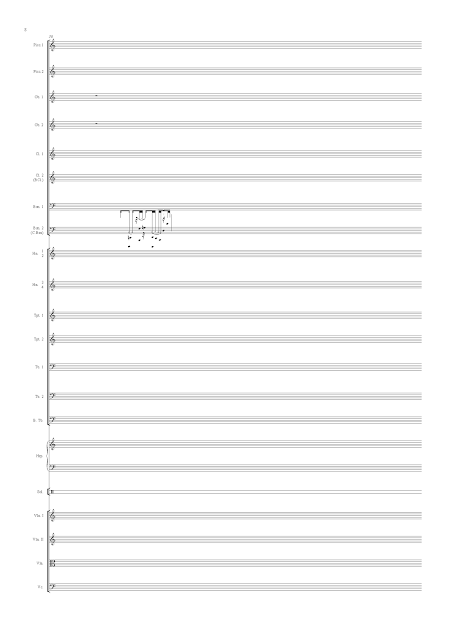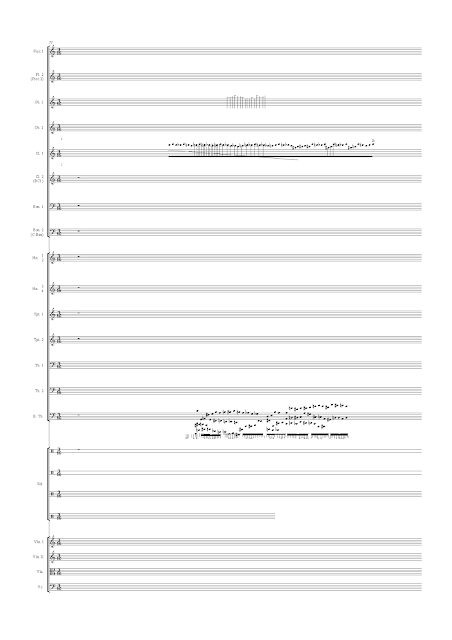Sunday, May 19, 2024
"Proproxasant; Indicated for Brugada Syndrome" for Piano
Saturday, May 18, 2024
"Bizzarrini" for Euphonium
The score for "Bizzarrini" is designed to represent a dynamic field of three-dimensional neometrical structures, where linear induction plays a pivotal role. This induction mechanism allows facets within the score to open and close, akin to a breathing organism that responds to the stimuli of musical interpretation. As these facets shift, they mold the framework of the composition, crafting a tapestry of perspectives that blur the lines between the spatial continuities of inside and outside.
One of the key aspects of the "Bizzarrini" score is its use of visual notational vectors. These vectors are not merely ornamental but serve as metaphors that guide the interpretation of the music. They elaborate the principal themes of the composition less like a mathematical proof and more like a gravitational center, exerting a centripetal force that draws all elements toward a cohesive auditory experience.
Paying homage to the concept of hypothetical modularity, "Bizzarrini" embraces a structure that allows for varying interpretations and performances. This modularity is not just a feature of the music's construction but also a reflection of the compositional philosophy behind it.
The concept of "hypothetical modularity" refers to a theoretical framework or approach where systems, designs, or structures are conceived as being modular, but such modularity isn't physically instantiated in a fixed manner. Instead, it remains a conceptual tool used to explore and manipulate the flexibility and potential configurations of a system.
Friday, May 17, 2024
"The Catholic Nutritionist". For Orchestra. PDF Score
Monday, May 13, 2024
Saturday, May 11, 2024
Thursday, May 9, 2024
Sunday, May 5, 2024
“Enclave of the Curated Pursuit” for Viola, Vibraphone and Flugelhorn
Saturday, May 4, 2024
"I Glory Infinitely In The Ivory Trinkets" for Solo Euphonium
The score of "I Glory Infinitely In The Ivory Trinkets" notably departs from conventional musical notation through its use of concentric squares and polygons that dynamically morph in shape. Each shape’s alteration in the score does not merely represent a change in pitch or rhythm but suggests a transformation in playing technique or emotive expression. This approach mirrors the broader shifts in contemporary art where the boundaries between different mediums and messages are increasingly blurred, emphasizing process and perception as much as the final artistic output.
Dynamic Relationship Between Code and Image
The entropic progression of shapes within the score highlights another critical aspect: the dynamic relationship between code (the written instructions) and image (the visual representation). For the performer, interpreting this score involves understanding a complex 'code'—not just in terms of musical notes but in decoding the symbolism embedded within shifting geometric figures. This requires a grasp of how theoretical and visual elements inform one another. It places questions of intention, automation, and artistic subjectivity into the spotlight.














































